
The Royal Conservatoire is a conservatoire in The Hague, providing higher education in music and dance. The conservatoire was founded by King William I in 1826, making it the oldest conservatoire in the Netherlands. Since September 2021, the KC is housed in the Amare building in the centre of the Hague, together with the Residentie Orkest and the Nederlands Dans Theater (NDT).
Bart Berman is a Dutch-Israeli pianist and composer, best known as an interpreter of Franz Schubert and 20th-century music.

Oscar Ignatius Joannes van Dillen is a Dutch composer, conductor, and instrumentalist.
De Grootste Nederlander was a public poll held in 2004 by the broadcasting company KRO of the Publieke Omroep. The series has the BBC's 100 Greatest Britons TV format. During the series, it included individual programmes on the top ten, with viewers having further opportunities to vote after each programme.
Jacobus Hendrikus Bastiaan "Jaap" Spaanderman jr. was a Dutch pianist, cellist, conductor and piano and conducting pedagogue.
Theo Bruins was a Dutch pianist and composer.
Kees van Baaren was a Dutch composer and teacher.
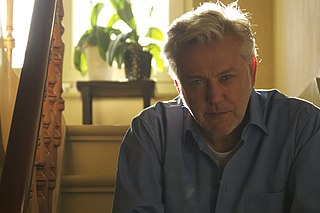
Wim Henderickx was a Belgian composer of contemporary classical music. He was composer in residence at Muziektheater Transparant and the Antwerp Symphony Orchestra, writing operas and other stage works. His music was influenced by oriental music and philosophy. He taught composition at the Royal Conservatoire of Antwerp and the Conservatorium van Amsterdam.
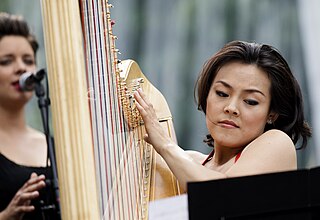
Lavinia Meijer is a South Korean-born Dutch harpist. Her concerts have included a solo harp evening at Carnegie Hall in New York City.
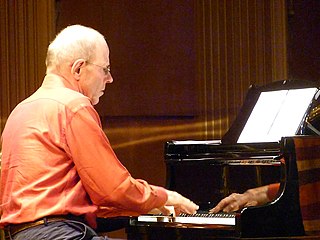
Guus Janssen is a Dutch composer of contemporary music and a recording artist. A pianist and harpsichordist, he is also active as a jazz performer.
Harry van der Kamp is a Dutch bass singer in opera and concert. Mostly active in Historically informed performance, he founded the Gesualdo Ensemble. He is also an academic voice teacher.
The Royal Conservatory of Ghent is a historic conservatory and a royally chartered musical institution in Ghent, Belgium. It is now a part of the University College Ghent.
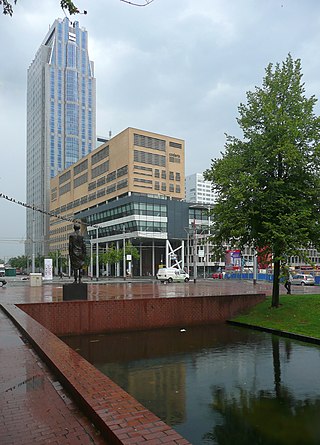
Codarts University for the Arts is a Dutch vocational university in Rotterdam that teaches music, dance and circus. It was established in its present location in 2000.
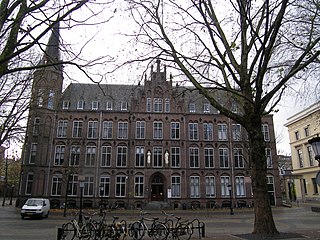
The Utrechts Conservatorium is a Conservatory of Music in Utrecht, Netherlands and part of the Utrecht School of the Arts (HKU). The conservatory opened in 1875 and is one of the eldest professional musical education institutes of the Netherlands. Since 1971, the conservatory is located in the former concert hall Gebouw voor Kunsten en Wetenschappen and in the former hospital St. Joannes de Deo, both on the same street. Apart from these two buildings, the Nederlandse Beiaardschool, located in Amersfoort, is also part of the school. The Utrechts Conservatorium merged in 1987 with the Carillon School and the Nederlands Instituut voor Kerkmuziek into the Faculty of music of the Utrecht School of the Arts.
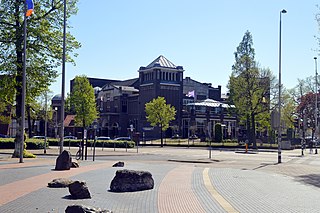
Concertgebouw de Vereeniging is a concert hall located in Nijmegen, Netherlands. The facility officially opened in 1915 and is built in a mixture of Art Nouveau and Art Deco styles. It has a capacity of 1,450 seats, and is renowned for its outstanding acoustics for orchestral music.

The Fontys School of Fine and Performing Arts is a Dutch vocational university of the arts located in Tilburg, part of the Fontys Hogescholen. The School originated from the merging of various educational institutions that had existed in different capacity before being united under the Fontys group. Among the precursors of the School was the Brabants Conservatorium, one of the nine conservatoires in the Netherlands.

Onze Kunst van Heden was an exhibition held in the winter of 1939 through 1940 at the Rijksmuseum in Amsterdam. Due to the threat of invasion in the years leading up to World War II, the Netherlands' government stored many items from the Rijksmuseum's permanent collection. The resulting empty gallery space was utilized by contemporary Dutch artists to exhibit and sell their art. It was organized by the director of the Rijksmuseum Frederik Schmidt Degener. The show was open to all artists, with each artist allowed to enter four pieces. 902 artists exhibited 3,200 works of art in 74 rooms and cabinets of the Rijksmuseum.
„De kunstenaar kan in tijden van maatschappelijke benauwenis weinig positiefs doen om rampen af te wenden, maar wel kan hij door mede te helpen nationale uitingen op het eigenaardigst naar voren te brengen het gemeenschapsbesef versterken. Wanneer de belangstelling van het publiek uitgaat naar deze manifestatie, die in zulk een omvang in Holland nog niet gezien is, dan zal menige kunstenaar zich op zijn beurt gesterkt voelen".
"The artist can do little positive in times of social distress to avert disasters, but he can, by helping to bring out national expressions in the most idiosyncratic way, strengthen the sense of community. When the public is interested in this event, which has not yet been seen to such an extent in Holland, many artists will feel strengthened in turn."
The Arlecchino is an award that is awarded annually in the form of a bronze statue by a jury of the Dutch Association of Theater and Concert Hall Directors (VSCD) as a prize for the most impressive male supporting actor role of the Dutch theater season. The prize bears the Italian name of the character Harlequin, and was first awarded in 1964. The figurine has been designed by Eric Claus since 2005. Previous designers were Nic Jonk, and Pépé Grégoire.










